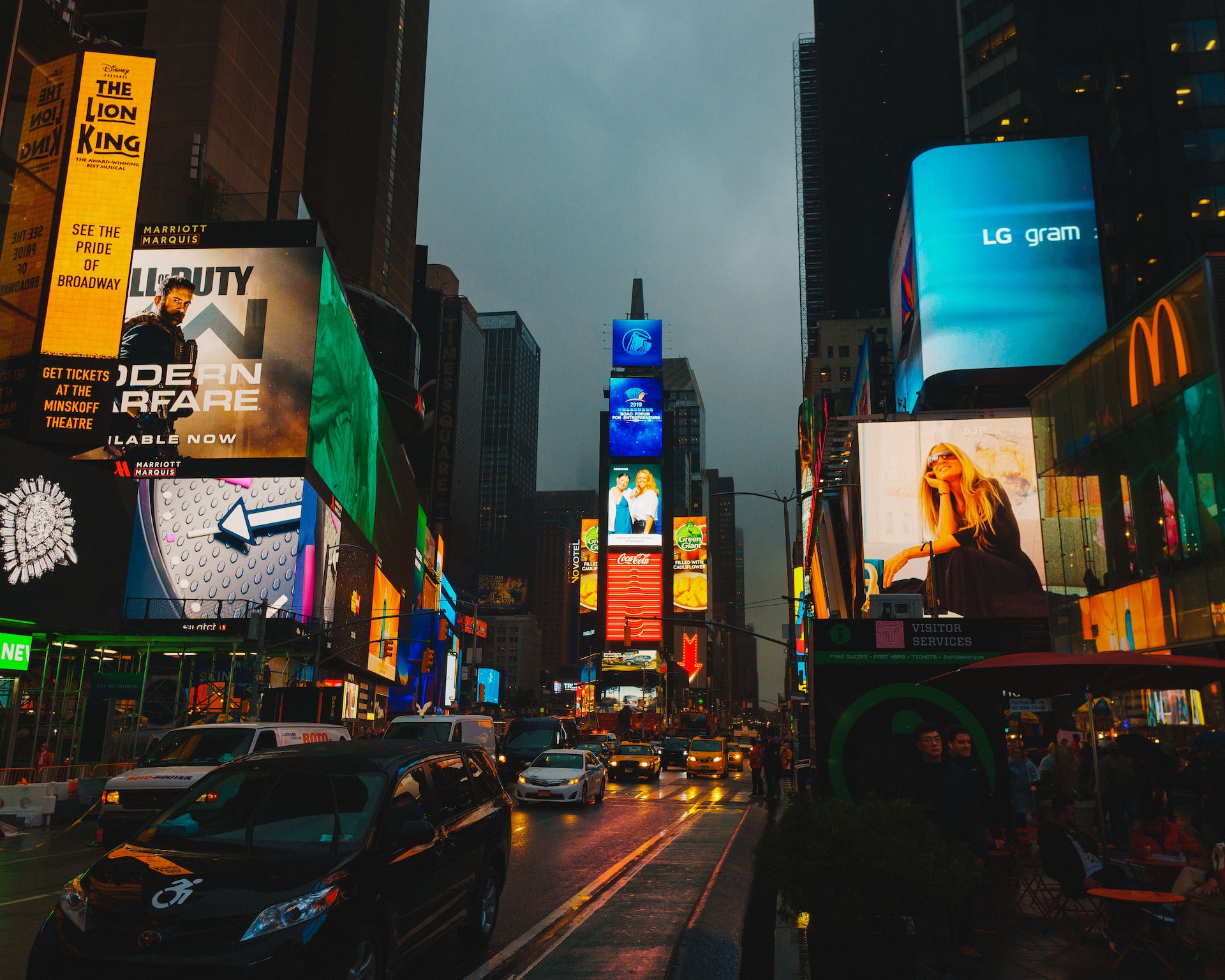Digital signage or traditional print advertising – which is better?

Today, information moves at a fast pace, and it is vital for sales that consumers always receive the most up-to-date advertising and communication. Your company must have thought about what kind of advertising would be wisest to invest in. In this text, we offer reasons why we believe digital signage is the future and traditional print ads will remain in history.
What is digital signage?
First of all, it is certainly good to review what digital signage means in practice, and what is done with it. Digital signage refers to technology that is used to present content on different display surfaces for people to view. It allows you to remotely control images, videos, animations or even interactive content, even on all your screens at the same time.
The display surfaces can be really anything. LED screens, LCD TVs, tablets, touch screens, info screens and so on. The screens are connected to the network using a media repeater, so that repeater appears in your Digital signage content management service. Through the repeater, the content is directed to your screen, no matter where it is.
Like print ads, digital signage screens can also be installed versatilely in the physical premises of various companies. Some good examples are shops, malls, restaurants, banks, accommodation and hospitals. However, digital signage is more effective than print advertising in every aspect. Digital displays increase the likelihood that a passer-by will notice your ad. In fact, digital displays get up to 400% more views than static ads. With the displays, you create a great modern look for your company, you better present your brand and you can promote your values. Next, let’s take a look at all the advantages you can take advantage of with this technology.
Digital signage benefits
Traditional print ads may seem like a cheap solution at first glance, because it’s cheaper to buy paper than a digital screen. However, it is essential to look at the costs in the long term, when digital signage ends up being a cheaper solution. Here are the reasons:
Constantly changing ads requires a lot of resources. First, you have to create the ad itself, which will be sent to print, and then wait for it to be completed. After that, you have to install each advertisement separately, not to mention transporting them to the site. Then the ads have to be taken out and taken to waste disposal or recycling after they are no longer relevant.

Thanks to digital signage, none of these challenges arise after installation. The content is changed from your computer in a few seconds and your advertising is up-to-date again.
Digital signage not only offers fast-adaptive advertising, but is proven to increase sales (which is, of course, the most important thing). In a study conducted in the United States, 80% of the participating companies that use digital signage reported an increase in sales of up to 33%, especially impulse purchases had increased. The annual growth rate for the use of the technology is around 6.3% and the global market is expected to almost triple by 2031 (the period measured in 2021-2031).
Continuous development also reduces costs due to the introduction of digital signage. In the screen network studied between 2004 and 2010, costs fell by 50% when there were 100 screens. The same trend is predicted to continue in the future.
Hyper-targeted advertising
As mentioned earlier, print ads end up being the more expensive solution, because changing them requires a lot of resources. However, that is not the only drawback. With print advertising, targeted advertising is nowhere near as good as with digital signage. Thanks to digital signage, you always advertise to a different target group at the best time. Features such as scheduling advertising content enable the customer to receive targeted advertising when he needs it the most. When you know your customers and their buying behavior well, your advertising becomes hyper-targeted and very effective. Up to 80% of consumers say they walked into a store because of an ad they saw on a digital screen.
Example: Retired people typically go to the store early in the morning to avoid traffic jams, but working people only get to the stores in the afternoon after the working day. Retired people could be targeted with ads between 8:00 and 11:00, for example, while working family members could be targeted between 15:00 and 19:00.

You can schedule your ad to appear exactly when your target group wants to hear from you.
Offers in real time
As another example, let’s take a company that offers 20% off their products during their upcoming campaign. The ads are printed and ready to install. After this, you will notice that your competitor offers their products at a 30% discount. What do you do if you know your campaign is going to fail right from the start?
In this case, digital signage makes your advertising very competitive. You can react very quickly to external changes in competitive and market situations. If your marketing team comes up with a good idea, in the best case scenario it can be implemented in your display network even during the same day.
Interactivity
Thanks to digital signage, advertisements can also be interactive. The best way to take advantage of interactivity is to use touchscreen displays.

Touch screens can be used to browse information on the screen, just like on a smartphone. For example, hotels can use touch screens to create a welcoming atmosphere for their customers. At events, visitors can view a map of the area or the schedule of the event. Department stores could use a feature where the user can browse, for example, the availability and location of products within the store. Print advertising remains a clear second in terms of interactive advertising.
Memorable advertising
Alongside the digital screen, print advertising does not achieve similar attention. Dynamic animations and great colors grab our attention much better than a paper banner. The advantages of digital signage are the visual possibilities it brings. In fact, our brain processes visual information up to 60,000 times faster than read information. Consumers can no longer stop to read long advertising texts. The average time of the ability to concentrate varies between about 3 and 8 seconds, so it is important to catch the attention of passers-by quickly and effectively. In terms of advertising, we are moving more and more into the visual direction, because its power has been noticed. Ads in image or video format get up to 94% more attention than ads in text format. Constantly evolving digital displays enable an efficient platform for creating visually stunning advertisements.
Longevity
The lifespan of print ads is not very long. Ads need to be replaced when they are no longer relevant. Weather conditions also affect how long a print ad looks new. Digital displays have a long lifespan. When used correctly, a single LED screen can last up to more than 100,000 hours. The screen can also be covered with transparent glass or plexiglass, which provides protection and is easy to clean if it gets dirty for some reason.
Ecology

Recycling print ads also takes resources. Chemicals and other toxic substances are released into nature if used advertisements are not properly recycled. Paper advertising requires constant use of resources, because the same advertisement cannot be used again without going through the processes.
Many companies prefer digital signage precisely for the reason that it reduces the amount of harmful substances and garbage ending up in nature. You might be thinking, how can screens be ecological if they use a lot of energy? LED technology enables not only a precise image and high brightness, but also good energy efficiency. LED lamps have long been talked about as long-lasting and energy-saving. The same technology is used in digital displays. Maintenance is also made easy with LED screens, as only the broken part of the screen can be replaced, after which the screen works like a new one.
In a nutshell
Of course, it’s no wonder if you still see paper ads on the street, but digital advertising is constantly evolving and there’s no looking back. Digital signage opens up countless options for companies, especially in targeted local advertising and opportunities to react to external changes quickly. The software gives you complete control over your communication. The means that improve interaction with your customers are now right at your fingertips. This is digital age communication.